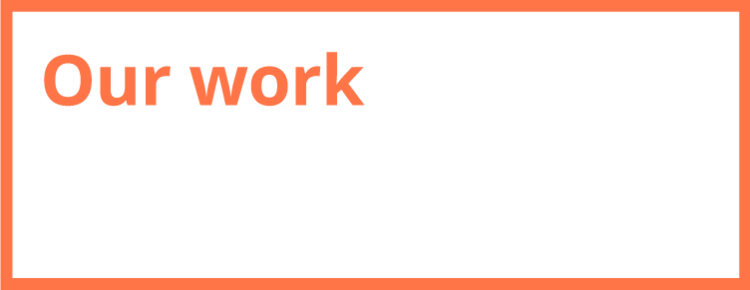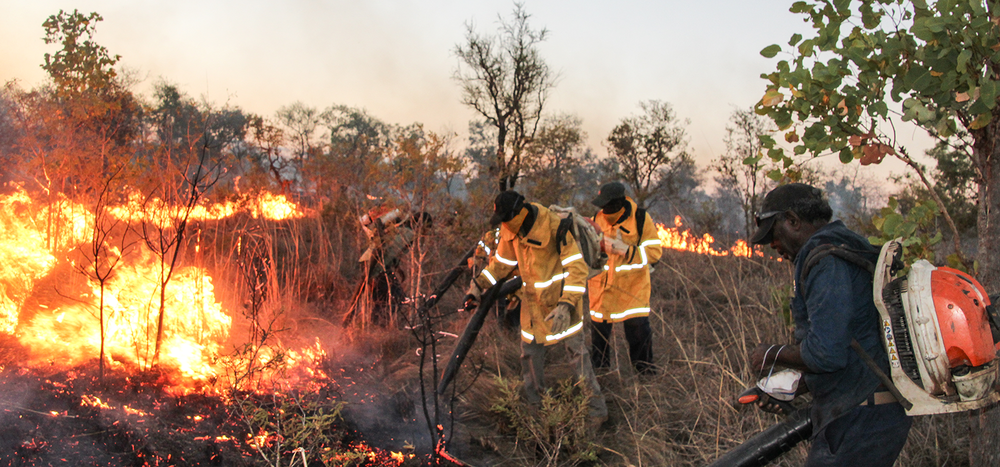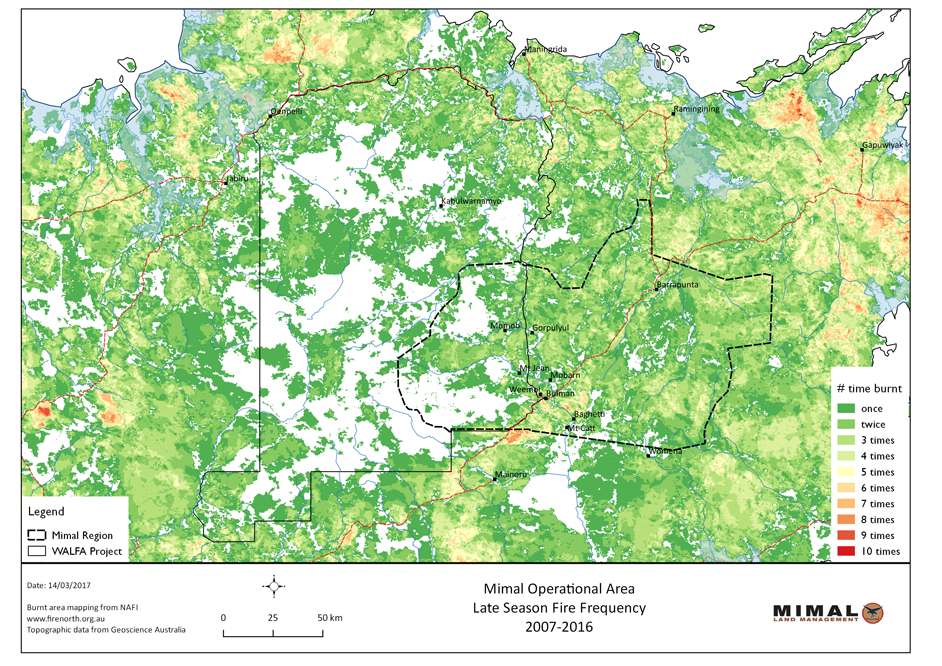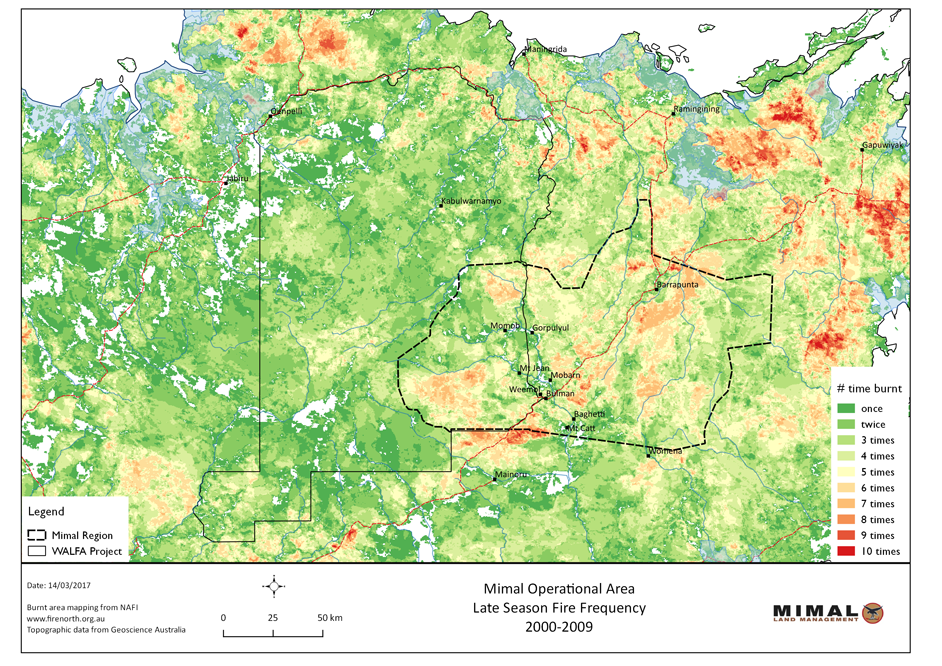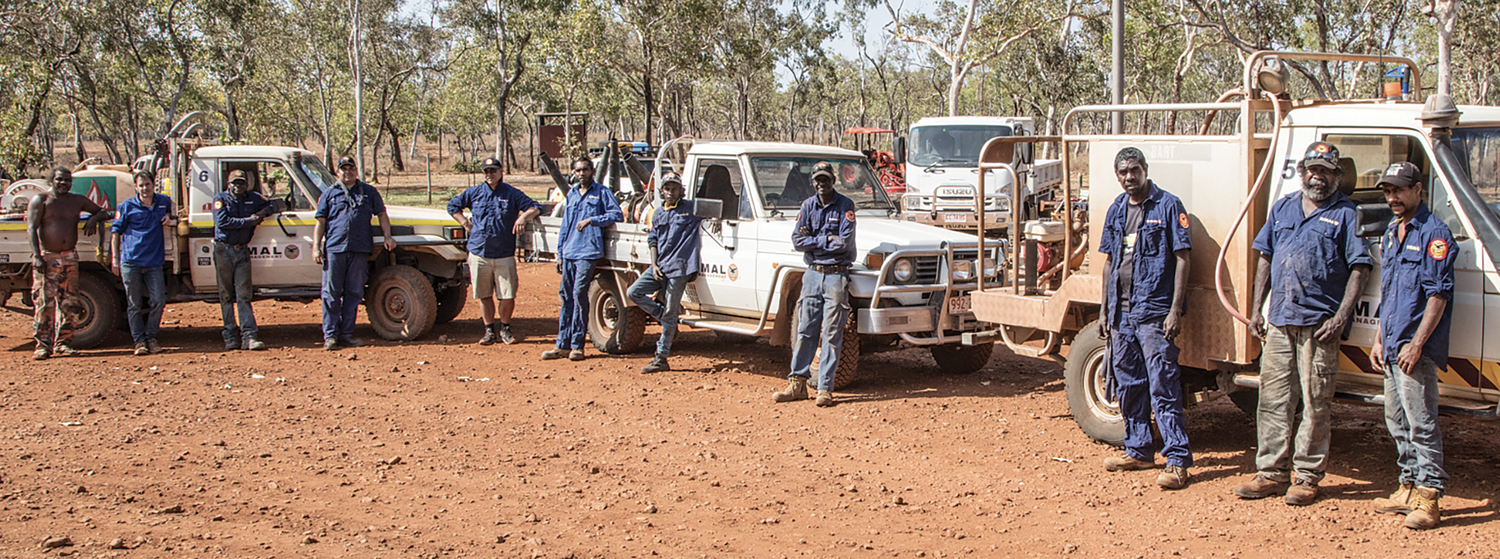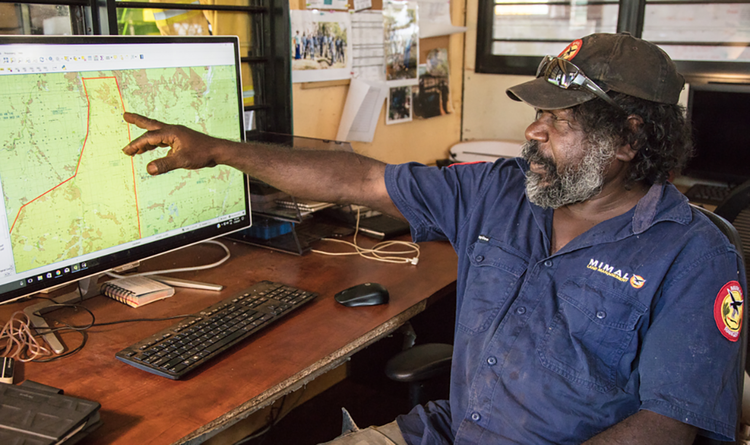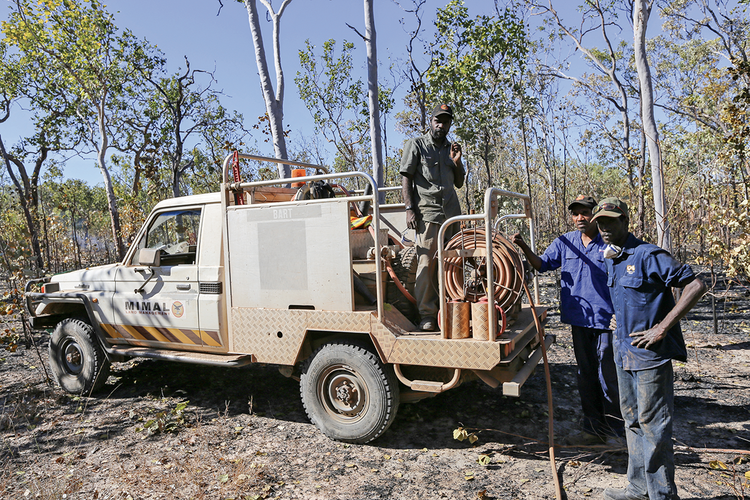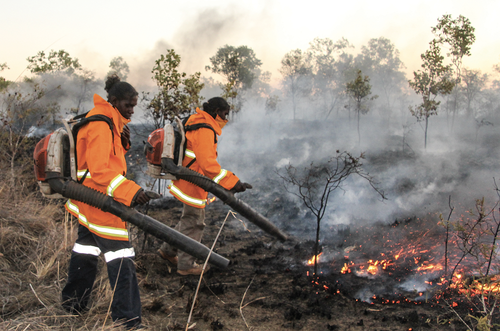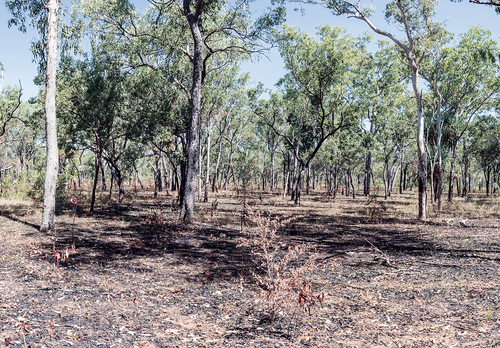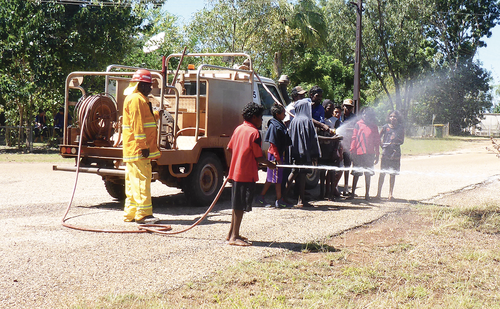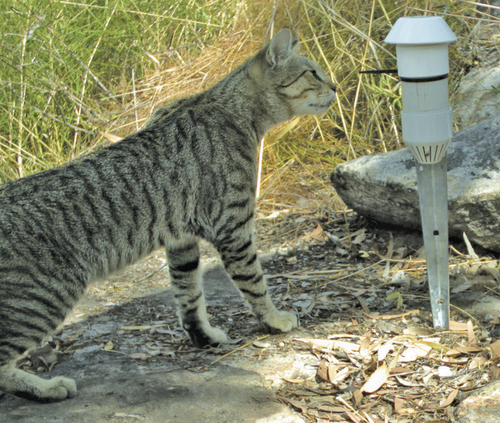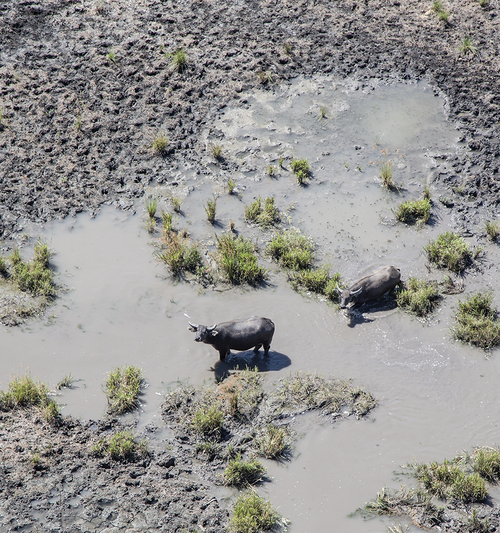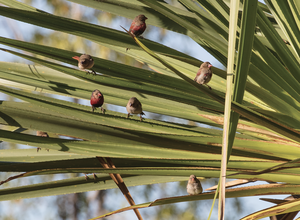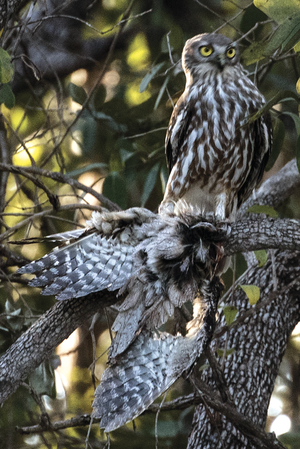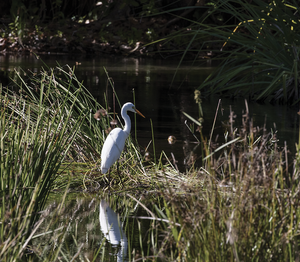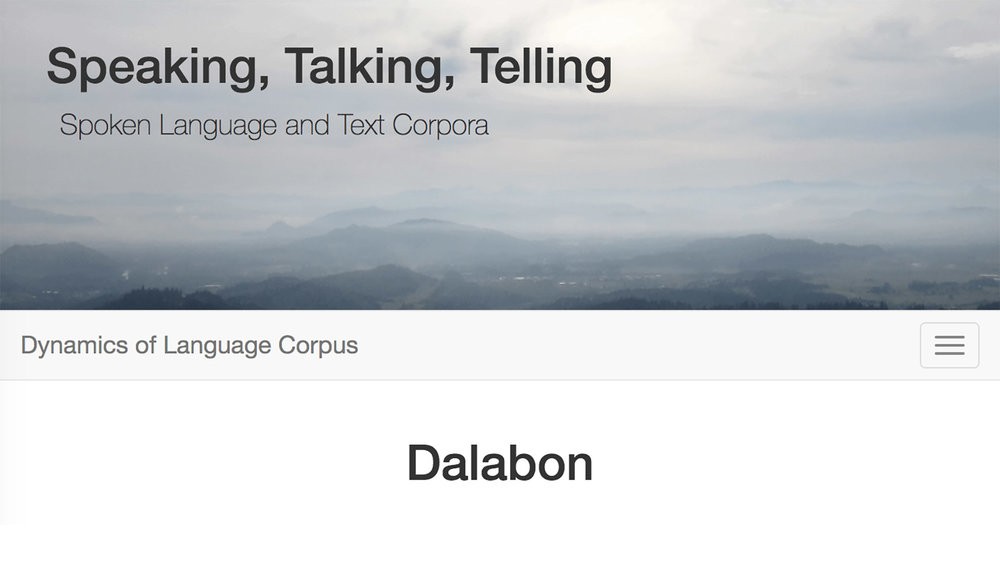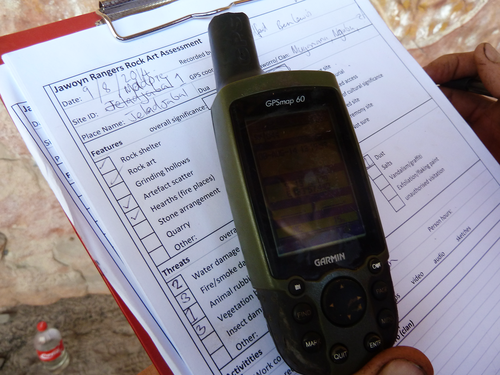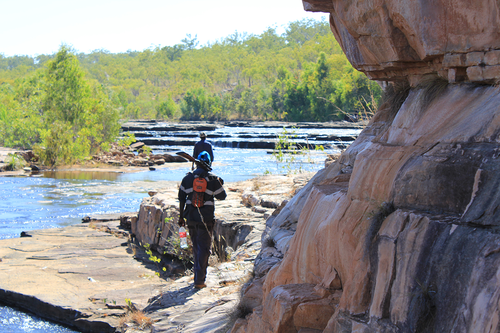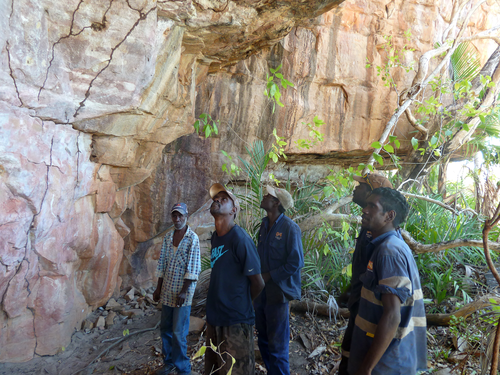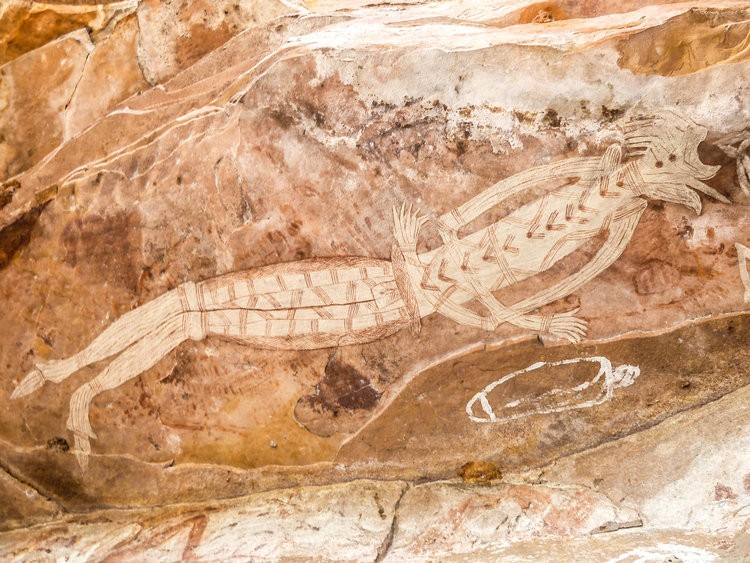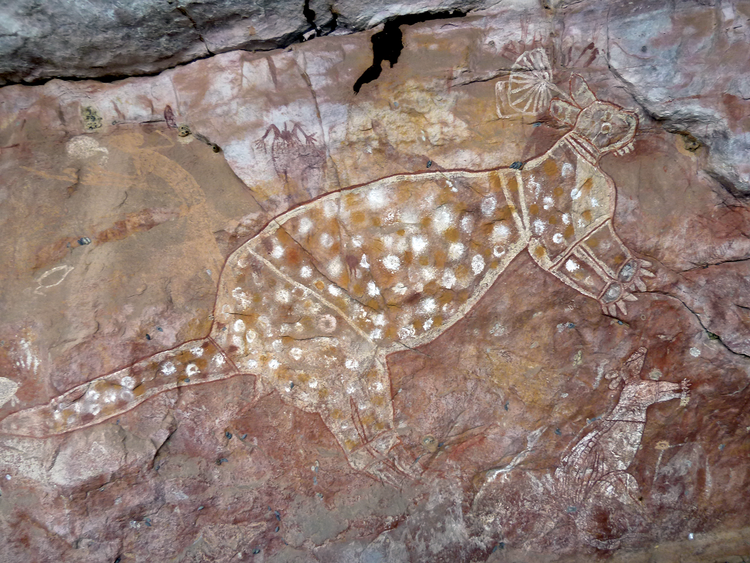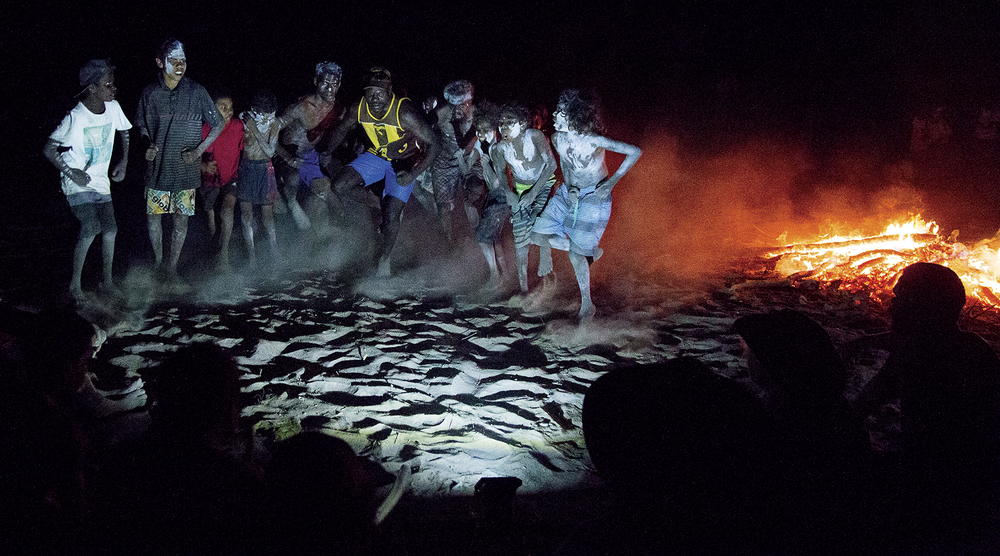Fighting ferals and disease
Land managers all over Australia are struggling to find ways to reduce populations of feral animals - from pigs and cats to big herd animals like buffalo, cattle, horses and donkeys.
Better management of ferals will reduce the threats of erosion, damage to fresh water areas and the spread of weeds. There are no simple and effective solutions, but our rangers are developing the knowledge and skills to use tools that are available to map where most damage is occurring and target places of most concern. Because the problem is so big, we focus on the worst affected areas. Freshwater places where we have springs, creeks and wetlands areas are most affected by the pests and removing ferals is an important part of our project to improve our freshwater. We are growing our skills in building and managing animal traps and using safe baiting techniques. Until we know more about how to control feral animals more efficiently, we are also investing in training our rangers to be skilled and qualified marksmen.
Many national parks and conservation friends try to get rid of all big, grass-eating herd animals. However, more than 20 years catching ferals like buffalo has created seasonal jobs and royalty money for some clans. That’s good for our local economy. We’re working to find ways we can work with landowners and commercial companies so we can continue to get economic benefits while improving management and reducing damage. Mimal wants to help landowners get the right balance between caring for country, making money and creating more jobs on country.
We share the concerns of all landowners for the early detection of diseases that may threaten animal and human populations. Mimal Rangers, like many remote ranger groups, are in a strategic position to provide cost-effective monitoring for such diseases. Partnerships, special training and fee-for-service contracts with Biosecurity Australia benefits local people and the nation. Older Mimal Rangers have quite a lot of experience in biosecurity work and they‘re helping to pass on that knowledge.

